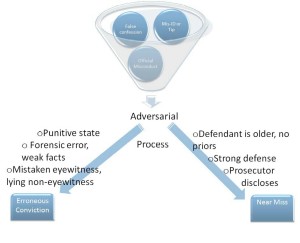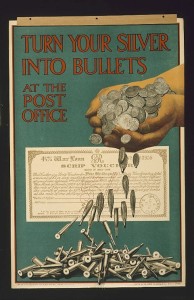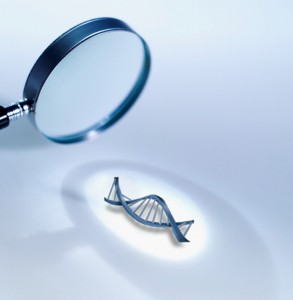
Characteristics in cases that led to erroneous convictions and cases that led to near misses. Source: Jon B. Gould et al., Predicting Erroneous Convictions: A Social Science Approach to Miscarriages of Justice. Final report to the National Institute of Justice (February 2013).
The National Institute of Justice funded American University researchers to study factors that lead to wrongful convictions. They examined 460 cases of violent felonies that occurred from 1980 to 2012, and they asked the question: Why are some innocent people convicted while others are released?
This month, the NIJ posted the final report. Gould and his colleagues identified 10 factors that led to a wrongful conviction:
- A younger defendant
- A defendant with a criminal history
- A weak prosecution case
- Prosecution withheld evidence
- Lying by a non-eyewitness
- Unintentional witness misidentification
- Misinterpreting forensic evidence at trial
- A weak defense
- Defendant offered a family witness
- A “punitive” state culture – defined by the number of executions per population.
In addition to the report, the NIJ offers videos of Jon Gould explaining the study.



